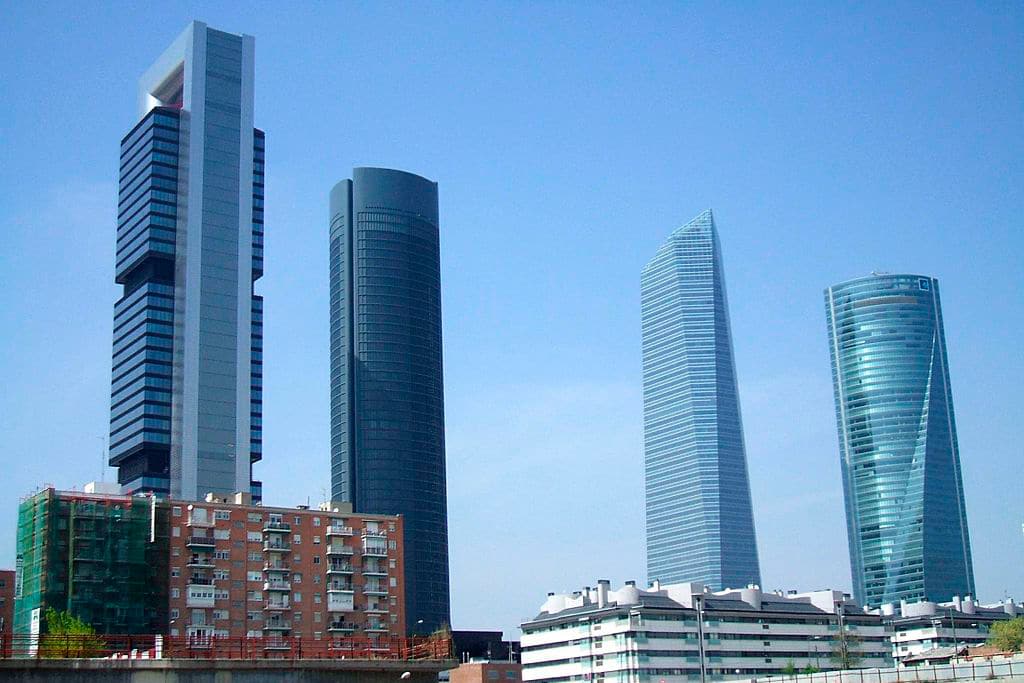
The lines of people queuing for food at community centres around the country have got noticeably longer, as a result of the disproportionate impact of COVID-19 on the poorest and most vulnerable. The relative poverty rate (those living with less than 60% of the median disposable income), which finally began to decline in 2017 after rising for a decade because of the Great Recession, is now increasing again and more sharply.
The NGO Oxfam Intermón estimates the rate will rise to 23.1% from 21.5% before the pandemic (see Figure 1). That might not seem very much, but it would lift the number in poverty by 700,000 to 10.8 million. The ‘anchored’ rate could reach 26% (12.3 million)[1].
Figure 1. Relative poverty 2008-2018 and impact of COVID-19 (% of population)
| 2008 | 2009 | 2010 | 2011 | 2012 | 2013 | 2014 | 2015 | 2016 | 2017 | 2018 | Post-COVID |
|---|---|---|---|---|---|---|---|---|---|---|---|
| 19.8 | 20.4 | 20.7 | 20.6 | 20.8 | 20.4 | 22.2 | 22.1 | 22.3 | 21.6 | 21.5 | 23.1 |
Source: INE and Oxfam Intermón.
The Gini income distribution index for Spain, where 0 represents perfect equality and 100 perfect inequality, is estimated to increase from 32.5 before the pandemic to 34.2. There again, that might seem insignificant but at the height of the recession between 2012 and 2013 the index rose by less than one point.
A month before Spain went into its Great Reclusion on 14 March, UN special rapporteur Philip Alston took the country to task over the level of its poverty. ‘Spain today needs to take a close look at itself in the mirror,’ he wrote in his report. ‘What it will see is not what most Spaniards would wish for. The self-image of a close family-based society rooted in deeply shared values and social solidarity has been badly fractured by an economic crisis and the implementation of neoliberal policies’.
Alston noted that Spain has one of the largest Roma communities in the EU, approximately 750,000 people (1.6% of the population). More than 80% face poverty or social exclusion and 46% are extremely poor, with a monthly income below €310. The community’s child poverty rate stands at 89% and unemployment at 52%, and only 17% over 16 complete secondary education or higher.
Spain went into the pandemic with a national unemployment rate of 14%, almost double the EU average. In a worst-case scenario, GDP could shrink by as much as 14% this year, pushing up unemployment to 25% and remaining at 20% in 2021. More than 3 million workers have been furloughed guaranteeing most of their income and so cushioning the impact of the crisis, but a significant number might not return to work when the scheme ends in September, depending on the extent to which activity has picked up, particularly in the vital tourism sector.
The most vulnerable to losing their employment are the poorest and women, many of whom are on precarious temporary contracts. These people are always the first to be made unemployed in times of crisis, as they are much cheaper to fire than those on permanent contracts. One in four employees in Spain are on temporary contracts, the highest proportion in the EU.
The rise in unemployment will be asymmetric. Oxfam Intermón estimates the loss of income by the poorest decile of the working population will be, proportionately, more than eight times that of the richest decile (see Figure 2).
Figure 2. Estimated percentage decline in disposable income by income deciles
| Decile 1 | Decile 2 | Decile 3 | Decile 4 | Decile 5 | Decile 6 | Decile 7 | Decile 8 | Decile 9 | Decile 10 |
|---|---|---|---|---|---|---|---|---|---|
| -20.5 | -13.7 | -8.7 | -7.0 | -5.6 | -4.8. | -4.5 | -2.8 | -2.6 | -2.4 |
Source: Oxfam Intermón.
Many of these vulnerable workers in low paid jobs bore the brunt of the response to the pandemic as they were on the front line –cleaners and porters in hospitals, carers in old people’s homes, those stacking the shelves in supermarkets, agricultural workers keeping the food chain going with fruit and vegetables (imports stopped) and transport workers, delivering to markets and homes.
The coalition government, despite being leftist, has been more frugal than the other big EU economies in spending its way out of the crisis, restricted by a fiscal deficit that took a decade to get below 3% of GDP, the EU’s threshold now discarded, and public debt at close to 100% of GDP. The deficit is forecast to jump to between 11% and 14%, depending on how long the pandemic lasts, and debt to 120%.
Spain’s immediate fiscal impulse amounted to 3.7% of GDP as against 13.3% in Germany and 4.8% in the UK, according to Bruegel. Spain is also sparing in tax deferrals, with measures amounting to 0.8% of GDP compared to 13.2% in Italy and 7.3% in Germany.
In one area, however, the government has been bold and that was with the launch of a minimum living income this month, which is targeted at the most needy, particularly families with children and single mothers. Up to 850,000 households could benefit from this social safety net (some 2.3 million people). The basic amount for an adult without children is €462, close to half the legal minimum wage, and the maximum €1,015 (four adults and one child). Foreigners are eligible if they have lived legally in Spain for at least a year.
Social expenditure until now has been mainly oriented towards the elderly. Family benefits in Spain are among the lowest in the EU, and tax deductions of limited advantage.
The foreign working population is at the greatest risk of becoming more impoverished. More than 2 million of the resident foreign population of 5.2 million (11% of the total, excluding the hundreds of thousands of nationalised Spaniards) come from non-EU countries (761,000 are Moroccans). The jobless rate for foreigners is projected to reach 28% this year, up from 19% in 2019, compared to 18% for Spaniards. Around 60% of carers and domestic workers are female immigrants, and one in four of the latter do not have social security coverage.
The pandemic is also having an uneven impact on children’s education, in a country where school drop-out rates were already the highest in the EU –17.3% in 2019. The government estimates up to 12% of school children dropped out of distance-learning in state schools during the lockdown –nearly one million pupils.
This is bound to have a long-term impact on educational attainment. All else being equal an increase in inequality of educational attainment tends to result in greater inequality of earnings, a vicious circle that needs to be broken.
[1] By using an indicator which measures poverty against a benchmark ‘anchored’ to 60% of the median real income observed in 2018 (i.e. keeping constant the value of the 2018 poverty line), increases in income poverty are much higher than suggested by relative income poverty. This variation is particularly pertinent in Spain.


